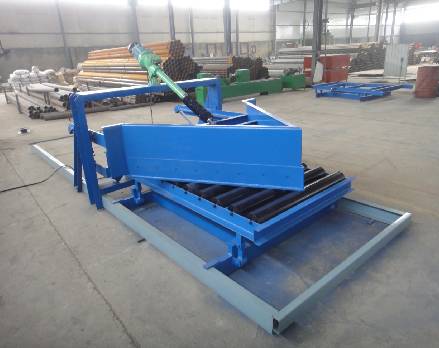 Afrikaans
Afrikaans  Albanian
Albanian  Amharic
Amharic  Arabic
Arabic  Armenian
Armenian  Azerbaijani
Azerbaijani  Basque
Basque  Belarusian
Belarusian  Bengali
Bengali  Bosnian
Bosnian  Bulgarian
Bulgarian  Catalan
Catalan  Cebuano
Cebuano  Corsican
Corsican  Croatian
Croatian  Czech
Czech  Danish
Danish  Dutch
Dutch  English
English  Esperanto
Esperanto  Estonian
Estonian  Finnish
Finnish  French
French  Frisian
Frisian  Galician
Galician  Georgian
Georgian  German
German  Greek
Greek  Gujarati
Gujarati  Haitian Creole
Haitian Creole  hausa
hausa  hawaiian
hawaiian  Hebrew
Hebrew  Hindi
Hindi  Miao
Miao  Hungarian
Hungarian  Icelandic
Icelandic  igbo
igbo  Indonesian
Indonesian  irish
irish  Italian
Italian  Japanese
Japanese  Javanese
Javanese  Kannada
Kannada  kazakh
kazakh  Khmer
Khmer  Rwandese
Rwandese  Korean
Korean  Kurdish
Kurdish  Kyrgyz
Kyrgyz  Lao
Lao  Latin
Latin  Latvian
Latvian  Lithuanian
Lithuanian  Luxembourgish
Luxembourgish  Macedonian
Macedonian  Malgashi
Malgashi  Malay
Malay  Malayalam
Malayalam  Maltese
Maltese  Maori
Maori  Marathi
Marathi  Mongolian
Mongolian  Myanmar
Myanmar  Nepali
Nepali  Norwegian
Norwegian  Norwegian
Norwegian  Occitan
Occitan  Pashto
Pashto  Persian
Persian  Polish
Polish  Portuguese
Portuguese  Punjabi
Punjabi  Romanian
Romanian  Russian
Russian  Samoan
Samoan  Scottish Gaelic
Scottish Gaelic  Serbian
Serbian  Sesotho
Sesotho  Shona
Shona  Sindhi
Sindhi  Sinhala
Sinhala  Slovak
Slovak  Slovenian
Slovenian  Somali
Somali  Spanish
Spanish  Sundanese
Sundanese  Swahili
Swahili  Swedish
Swedish  Tagalog
Tagalog  Tajik
Tajik  Tamil
Tamil  Tatar
Tatar  Telugu
Telugu  Thai
Thai  Turkish
Turkish  Turkmen
Turkmen  Ukrainian
Ukrainian  Urdu
Urdu  Uighur
Uighur  Uzbek
Uzbek  Vietnamese
Vietnamese  Welsh
Welsh  Bantu
Bantu  Yiddish
Yiddish  Yoruba
Yoruba  Zulu
Zulu Guidelines for Selecting and Using Conveyor Belt Guide Rollers Effectively
Understanding Conveyor Belt Guide Rollers An Essential Component for Optimal Performance
Conveyor systems are an integral part of many industries, providing efficient material handling and transportation solutions. One of the often-overlooked components of these systems is the guide roller. Conveyor belt guide rollers play a crucial role in the performance and longevity of conveyor systems, ensuring that materials move smoothly and safely from one point to another.
What are Conveyor Belt Guide Rollers?
Conveyor belt guide rollers are specially designed components that help keep the conveyor belt aligned and on track during operation. These rollers are typically mounted on the sides of the conveyor system and serve to lead the belt and prevent it from drifting off course. The primary purpose of these rollers is to support the sides of the conveyor belt, ensuring stability and minimizing wear on the belt itself.
The Importance of Guide Rollers
The importance of guide rollers cannot be overstated. When a conveyor belt deviates from its intended path, it can cause several problems. Misalignment can lead to increased wear and tear on both the belt and the rollers, reducing the lifespan of these components and increasing maintenance costs. Furthermore, a misaligned belt can result in product spillage, inefficient material flow, and potential safety hazards.
Guide rollers help to mitigate these issues by exerting a lateral force that keeps the belt centered. By maintaining proper alignment, these rollers enable the conveyor system to function more efficiently, thereby enhancing overall productivity. Additionally, they contribute to energy savings by reducing friction; a well-aligned conveyor belt consumes less power, leading to lower operational costs.
Types of Guide Rollers
There are various types of guide rollers to suit different applications and conveyor configurations. Some common types include
conveyor belt guide rollers

1. Fixed Guide Rollers These rollers are positioned at a fixed location along the conveyor system. They are effective in applications where the belt's path is well-defined and does not change frequently.
2. Adjustable Guide Rollers As the name suggests, these rollers can be adjusted to accommodate changes in the conveyor belt alignment. They are useful in applications where flexibility is needed to adapt to variable load conditions.
3. Self-Aligning Rollers These innovative rollers are designed to automatically adjust their position based on the belt's alignment. This type of roller is particularly beneficial in systems that experience frequent misalignment or variations in belt tension.
4. Welded or Bolt-On Rollers Depending on the design of the conveyor system, guide rollers can be either welded or bolted onto the frame. The choice between these methods often depends on the ease of maintenance and the specific requirements of the application.
Maintenance of Guide Rollers
Proper maintenance of conveyor belt guide rollers is key to ensuring their longevity and optimal performance. Regular inspections are essential to identify signs of wear such as surface damage or misalignment. Lubrication of roller bearings can help reduce friction and extend the lifespan of the components. Additionally, it’s important to clean the rollers periodically to remove debris that may cause obstruction or wear.
Conclusion
In conclusion, conveyor belt guide rollers are a vital element of conveyor systems that significantly impact their efficiency and longevity. By ensuring that the conveyor belt remains properly aligned, these rollers help prevent wear, reduce maintenance costs, and enhance safety. Businesses that invest in high-quality guide rollers and prioritize their maintenance can expect improved performance from their conveyor systems, ultimately contributing to increased productivity and cost savings. Understanding the role of conveyor belt guide rollers can lead to better decision-making regarding equipment selection and maintenance, ensuring smooth operations in various industrial applications.
-
Revolutionizing Conveyor Reliability with Advanced Rubber Lagging PulleysNewsJul.22,2025
-
Powering Precision and Durability with Expert Manufacturers of Conveyor ComponentsNewsJul.22,2025
-
Optimizing Conveyor Systems with Advanced Conveyor AccessoriesNewsJul.22,2025
-
Maximize Conveyor Efficiency with Quality Conveyor Idler PulleysNewsJul.22,2025
-
Future-Proof Your Conveyor System with High-Performance Polyurethane RollerNewsJul.22,2025
-
Driving Efficiency Forward with Quality Idlers and RollersNewsJul.22,2025





























